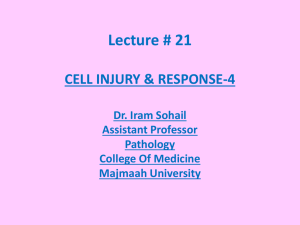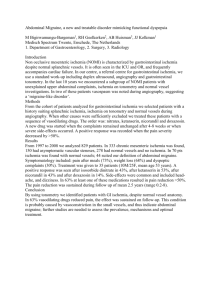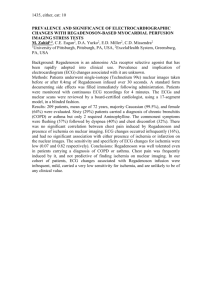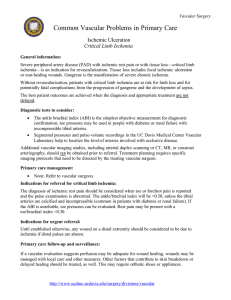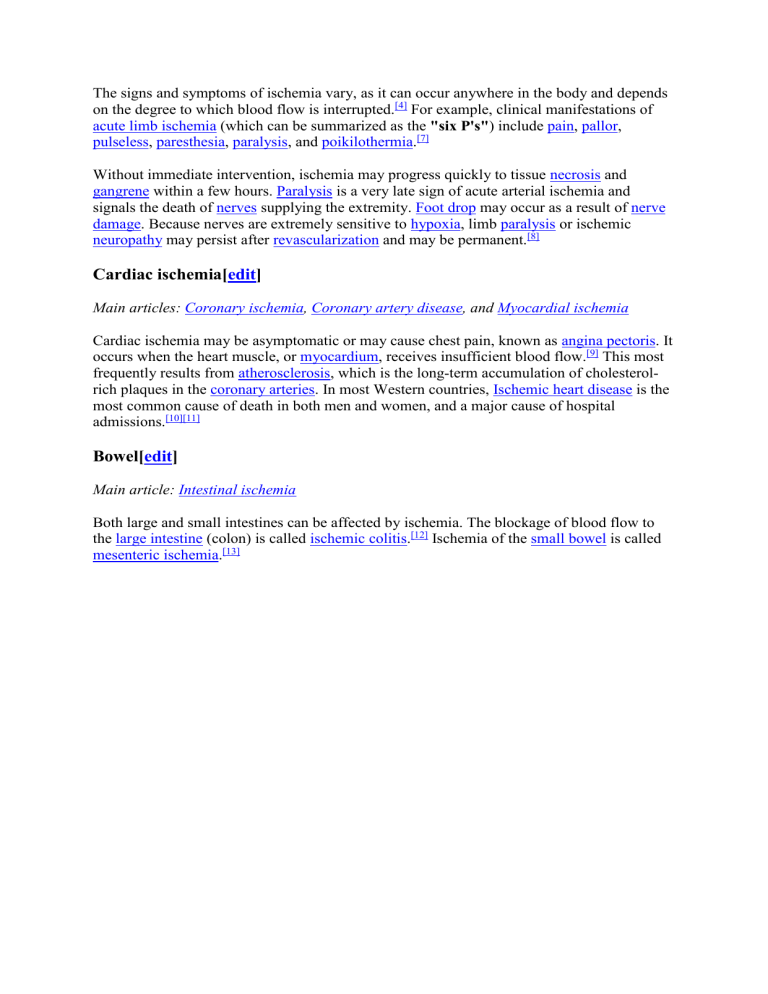
The signs and symptoms of ischemia vary, as it can occur anywhere in the body and depends on the degree to which blood flow is interrupted.[4] For example, clinical manifestations of acute limb ischemia (which can be summarized as the "six P's") include pain, pallor, pulseless, paresthesia, paralysis, and poikilothermia.[7] Without immediate intervention, ischemia may progress quickly to tissue necrosis and gangrene within a few hours. Paralysis is a very late sign of acute arterial ischemia and signals the death of nerves supplying the extremity. Foot drop may occur as a result of nerve damage. Because nerves are extremely sensitive to hypoxia, limb paralysis or ischemic neuropathy may persist after revascularization and may be permanent.[8] Cardiac ischemia[edit] Main articles: Coronary ischemia, Coronary artery disease, and Myocardial ischemia Cardiac ischemia may be asymptomatic or may cause chest pain, known as angina pectoris. It occurs when the heart muscle, or myocardium, receives insufficient blood flow.[9] This most frequently results from atherosclerosis, which is the long-term accumulation of cholesterolrich plaques in the coronary arteries. In most Western countries, Ischemic heart disease is the most common cause of death in both men and women, and a major cause of hospital admissions.[10][11] Bowel[edit] Main article: Intestinal ischemia Both large and small intestines can be affected by ischemia. The blockage of blood flow to the large intestine (colon) is called ischemic colitis.[12] Ischemia of the small bowel is called mesenteric ischemia.[13]


